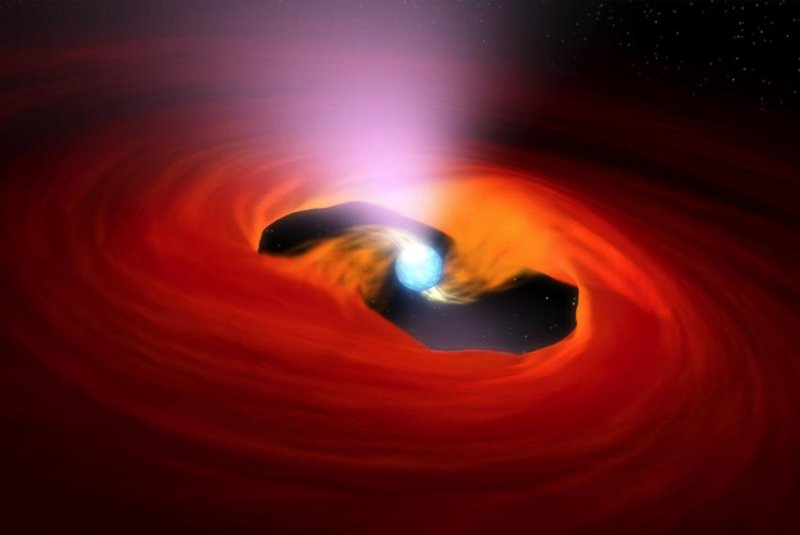An illustration depicts an ultra-luminous X-ray pulsar. Photo by NASA/JPL-Caltech
June 3 (UPI) -- After a 26-year slumber, an ultra-bright X-ray source has awakened inside the Magellanic Bridge, a river of gas and dust that connects the large and small Magellanic Clouds.
The source, named RX J0209.6-7427, was first discovered in 1993 after an X-ray outburst that lasted six months. Ever since, the object has been quiet.
Originally, the source was classified as a Be-type X-ray binary system -- high-mass X-ray binaries featuring a Be star and a neutron star. But in November, a team of Indian astronomers detected broad-energy X-ray pulsations from the source using AstroSat, their nation's first dedicated space observatory.
The new observations -- described Wednesday in the journal Monthly Notices of Royal Astronomical Society -- forced scientists to reclassify the source as an ultra-luminous X-ray pulsar, or ULXP. The object is the second-closest of its kind to be discovered to date.
"The conventional theory is that in order to shine so brightly, ULXPs must be glowing accretion disks around black holes," lead study author Amar Deo Chandra, graduate student at the Center of Excellence in Space Sciences India, said in a news release. "However, recent discoveries of pulsations in these objects suggest that they may in fact have neutron stars at their heart."
Neutron stars are some of the densest objects in the universe, with a mass greater than our sun squeezed into an area roughly the size of a major city. The dead, collapsed stars can spin as fast as 100 revolutions per second, causing their magnetic poles to release powerful X-ray pulses. When neutron stars behave this way, they're called X-ray pulsars.
Observations of RX J0209.6-7427 suggest the pulsar is speeding up, a sign that the star object recently consumed material from a stellar companion. Astronomers suggest ULXPs hold secrets about the evolution of the cosmos, but unfortunately, these sources are rare.
"This is only the eighth ULXP detected so far, and the first one near the Magellanic Clouds," Chandra said. "It raises the interesting possibility that a significant fraction of ultra-luminous X-ray sources may really be neutron stars accreting at super Eddington rates, rather than black holes as previously thought."















